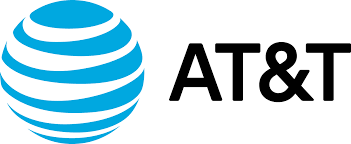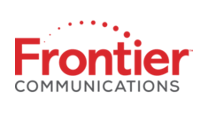Xfinity Cox AT&T Frontier Spectrum
There are two primary ways of getting low-income internet assistance in California:
- Provider-managed low-income programs like Xfinity Internet Essentials or AT&T Access ($9.95+/month).
- Federal subsidies on consumer plans through the Affordable Connectivity Program ($25+/month).
The key difference between these programs is the approval process.
Provider-managed plans are notoriously difficult to get into, since they only accept customers with existing income verification from Federal or state programs like SNAP. These are only offered by major providers like Xfinity and Frontier; small local providers don’t typically offer this type of plan.
The ACP (Affordable Connectivity Program) subsidies are much easier to qualify for, because they accept anyone with income below 200% of the Federal poverty level. The thresholds are suprisingly high; a married couple with one child earning $51,640 or less annually are eligible for $360 in ACP discounts. Single people earning under $30,120 are also eligible, and can qualify using pay stubs.
The ACP doesn’t require you to participate in other low-income programs to get in. Almost all providers in California participate in the ACP program, including small local providers like Sonic and Ting Fiber.
Homes within the 12% of California considered to be in poverty by census standards1 can also apply a state or federal credit against their internet bill through the LifeLine program. However, this is normally used for mobile or phone service.
Low-income internet providers came under fire during and after the Covid pandemic, since the upload speeds on subsidized plans were often too low to support Zoom calls and online learning.
Obviously, this put families reliant on such plans at a disadvantage when school went fully online.
Thankfully, some providers responded by updating their speed tiers and increasing access to the programs beyond just a handful of income qualification programs.
As of 2024, the upload speeds for each low-income internet package in California is as follows:
- Xfinity: 10 Mbps upload speed via Xfinity Internet Essentials
- Cox: 1 Mbps upload speed via Cox Connect2Compete
- AT&T: 5 Mbps upload speed via AT&T Access 10
- Frontier: 1 Mbps upload speed via Frontier Fundamental Internet
- Spectrum: 4 Mbps upload speed via Spectrum Internet Assist
Xfinity's low-income internet pricing
Xfinity offers low-income internet at $9.95 per month via Xfinity Internet Essentials. By comparison, their cheapest non-subsidized plan starts at $57 and a $15 monthly equipment fee. The low-income plan is contract-free, unlike the base Xfinity consumer plan.
| Xfinity base plans | Monthly price | Download speed |
|---|---|---|
| Xfinity low-income program | $9.95 | 50 Mbps |
| Xfinity base consumer plan | $57 | 75 Mbps |
Consumer plans are offered at a $19.99 first-year discount price, so the total first-year price is $239.88 compared with $119.4 for Xfinity Internet Essentials.
Overall, Xfinity offers the best price-to-speed ratio among California’s low-income internet plans. The price is typically at least a fifth of what you pay for the consumer-grade plans, with very little difference in speed experience.
Cox's low-income internet pricing
Cox Cable offers low-income internet at $9.95 per month via Cox Connect2Compete. By comparison, their cheapest non-subsidized plan starts at $44.99 and a $10.99 monthly equipment fee. The low-income plan is contract-free, unlike the base Cox Cable consumer plan.
| Cox base plans | Monthly price | Download speed |
|---|---|---|
| Cox low-income program | $9.95 | 25 Mbps |
| Cox base consumer plan | $44.99 | 10 Mbps |
Consumer plans are offered at a $29.99 first-year discount price, so the total first-year price is $359.88 compared with $119.4 for Cox Connect2Compete.
On the whole, Cox’s low-income program offers a great price with not-so-great features. The speeds are lower than other cable companies on the market, and the application process is even trickier than the industry standard.
AT&T's low-income internet pricing
AT&T offers low-income internet at $10 per month via AT&T Access 10. By comparison, their cheapest non-subsidized plan starts at $55.
AT&T is the only low-income options for many rural areas, making this one of the most important low-income plans on the market. Unfortunately, they’ve not picked up their speeds and qualification criteria as well as competitors like Xfinity.
Still, the $10 per month price is among the best price points on the market.
Frontier's low-income internet pricing
Frontier offers low-income internet at $14.99 per month via Frontier Fundamental Internet. By comparison, their cheapest non-subsidized plan starts at $59.99 and a $10 monthly equipment fee.
| Frontier base plans | Monthly price | Download speed |
|---|---|---|
| Frontier low-income program | $19.99 | 12 Mbps |
| Frontier base consumer plan | $59.99 | 1 Mbps |
Consumer plans are offered at a $49.99 first-year discount price, so the total first-year price is $599.88 compared with $239.88 for Frontier Fundamental Internet.
Spectrum's low-income internet pricing
Spectrum offers low-income internet at $24.99 per month via Spectrum Internet Assist.
For a price comparison, their cheapest non-subsidized plan starts at $79.99 plus a $7 monthly equipment fee. Spectrum is one of the only providers on the market to charge router leasing fees to low-income customers.
| Spectrum base plans | Monthly price | Download speed |
|---|---|---|
| Spectrum low-income program | $31.99 | 30 Mbps |
| Spectrum base consumer plan | $79.99 | 300 Mbps |
Consumer plans are offered at a $49.99 first-year discount price, so the total first-year price is $599.88 compared with $383.88 for Spectrum Internet Assist.
Overall, Spectrum has one of the weakest low-income offers on the California market. The price is almost double the market average, while the price is a fraction of what’s offered by the other large cable company in the state, Xfinity.
Summary: basic service price for each CA low-income program
In summary, the monthly pricing of the low-income internet plans offered in California are:
- Xfinity: $9.95
- Cox: $9.95
- AT&T: $10
- Frontier: $19.99
- Spectrum: $31.99
Frequently Asked Questions
What is the cheapest low-income internet option in California?
Xfinity and Cox are tied for the cheapest low-income internet programs in California. Both offer service for $9.95 per month to qualifying households. Xfinity's plan is significantly faster at 50 Mbps versus Cox's 25 Mbps offering. However, the choice normally comes down to which provider is already wired to the home.
How can I get $10 internet in California?
Three providers offer low-income plans at the $10 price point or below: Xfinity, Cox, and AT&T. Each of these programs can be accessed with the provider directly, and are only available to customers who have already verified their income with a Federal or State program like SNAP or SSI.
How much does low-income internet cost in California?
The average price among low-income program providers is $14.57 per month including equipment fees. Prices typically start around $10 and range up to $35+ depending on provider and location.









